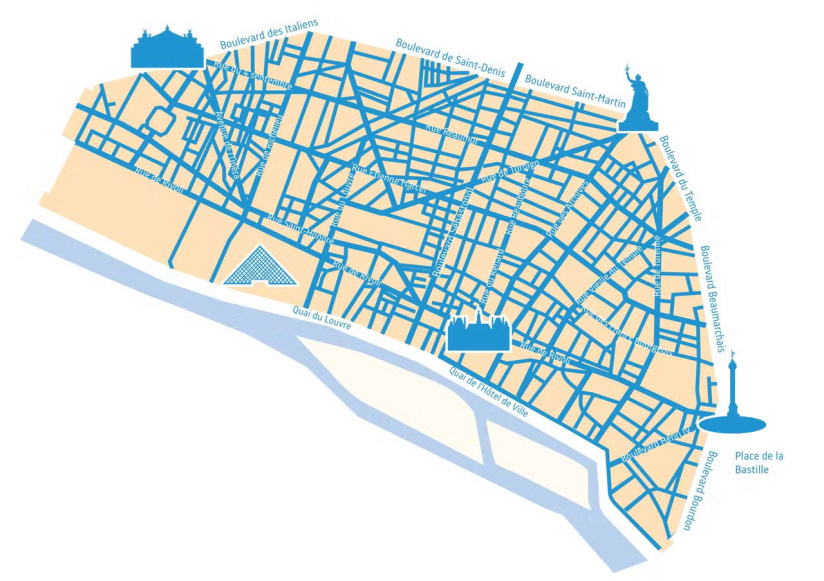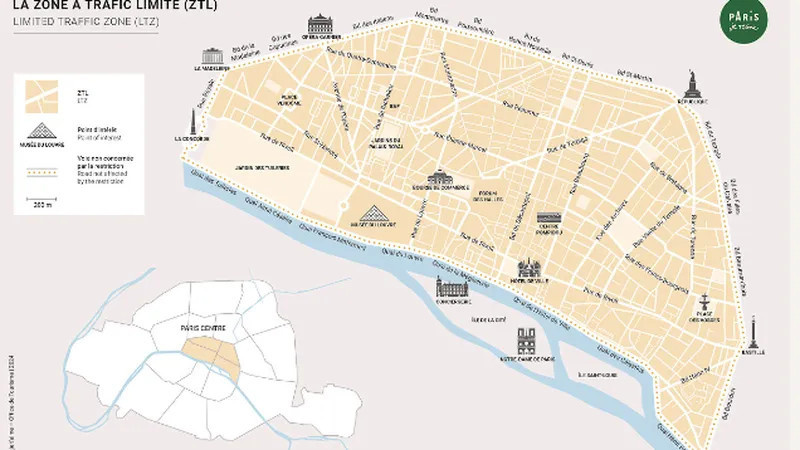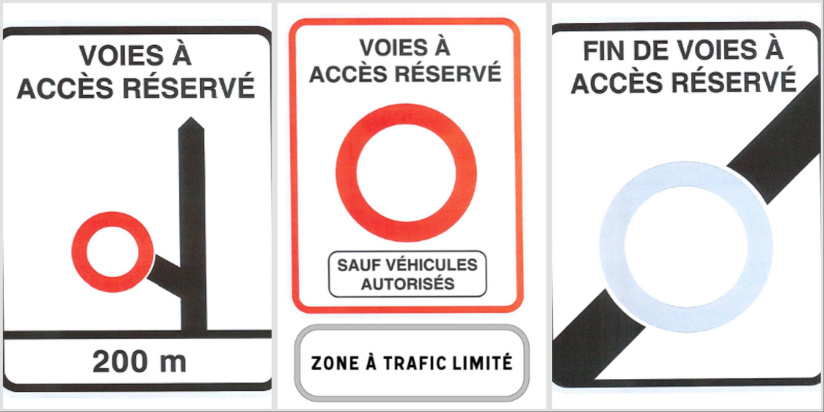On Monday November 4, Paris inaugurated its Zone à Trafic Limité (ZTL) in the 1st, 2nd, 3rd and 4th arrondissements to reduce through-traffic. This initiative excludes motorized vehicles that do not justify a legitimate stop in the zone. Delimited by emblematic locations, this ZTL should bring about lasting changes to traffic patterns in the city center, while aiming to reduce noise pollution and air pollution. We take a look at all the questions you may have.
The Zone à Trafic Limité (ZTL) took effect on Monday November 4, 2024, in the hypercentre of Paris. This project aims to restrict motorized vehicle traffic in the first four arrondissements, with the exception of those with a specific reason for being there. Vehicles simply in transit are therefore invited to bypass this perimeter.
The ZTL includes the capital's 1st, 2nd, 3rd and 4th arrondissements. The zone is delimited by well-known arteries: to the west, Place de la Concorde and Rue Royale; to the north, Boulevard de la Madeleine, Boulevard Capucines, Boulevard Montmartre and Boulevard Bonne Nouvelle; to the east, Place de la République and Place de la Bastille; to the south, the quays between Quai Henri IV and Quai des Tuileries. However, certain areas such as the upper quays of the right bank and the islands of La Cité and Saint-Louis remain excluded from this restriction.
This limited traffic zone (ZTL ) now prohibits motorized vehicles from crossing the center of Paris in transit mode, except by special dispensation, 24 hours a day, 7 days a week. Crossing the zone without stopping is no longer permitted: you must go around it. Cyclists, scooters and other active modes of transport are not affected by this measure, in line with our desire to encourage gentler modes of transport in the city.
The ZTL is designed to allow access only for local services and trips whose destination lies within the perimeter. Here are a few examples of situations where cars can enter and park in this zone:
In addition to the vehicles mentioned above, certain workers with special authorization and delivery vehicles will also be able to access the ZTL subject to temporary or permanent justification. This system will make it possible to check the legitimacy of movements without disrupting essential services. A three-month adaptation phase has been announced to raise motorists' awareness.
Each access to a ZTL is marked by a sign explicitly indicating entry into a restricted traffic zone. This sign displays a white circle with a red border on a white background, indicating the traffic restriction.
The municipality is setting up a control phase which will begin with a three-month educational period. During this time, motorists will be made aware of the new rules, but no fines will be applied. After this period, an automated control system based on cameras and defined crossing points will be activated. Motorists will also have to register online and obtain a traffic attestation if their journey is authorized. Drivers will then have to justify their presence in the zone by providing evidence such as purchase receipts, restaurant or theater receipts.
In order to circulate in the limited traffic zone (ZTL ) in Paris, a system of supporting documents is being prepared to prove that you have a legitimate reason for being there. During the months of "pedagogy", motorists will be able to use a simple parking ticket as temporary proof of their presence in the zone, or proof of reservation. Eventually, Paris City Hall and the Prefecture de Police are working on a more permanent verification system, which could include a mobile application or QR code. This type of control would be reinforced by plate-reading radars to monitor entry into the ZTL, a measure already adopted in Italy in cities such as Milan and Turin, where offenders are fined 100 euros.
GPS applications take into account the new ZTL regulations in Paris, but unevenly. Google Maps now indicates the zone with a blue border and a warning for affected journeys. Waze goes a step further, allowing users to adapt the application to their profile, thus facilitating traffic in the ZTL. However, Apple Plans does not currently offer any specific warnings or information on this zone, and no update has been announced for the time being.
Offenders are liable to a fine of €135 for unjustified driving in the ZTL. Once the control system is active, infringements will be detected by cameras and systematically punished to discourage non-compliant behavior.
In short, the ZTL in Paris marks a major upheaval in the capital's mobility policies, aimed at reducing car traffic, noise pollution and air pollution by limiting access to unnecessary vehicles in the heart of Paris. This has not gone unnoticed by shopkeepers and the surrounding areas, who fear that traffic will be pushed back onto their streets.
Recommended age
For all



























